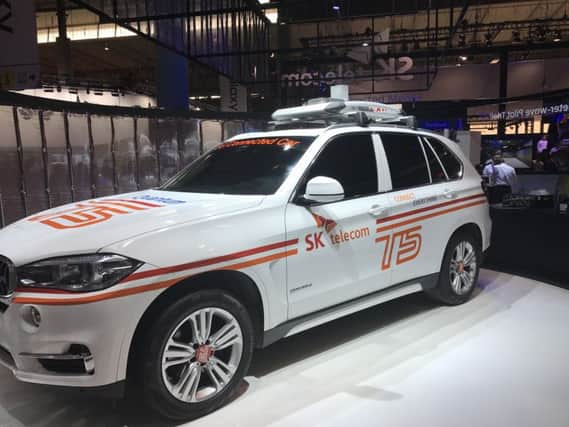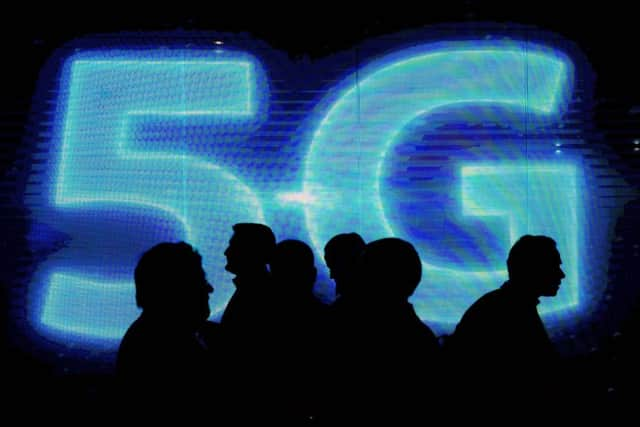Ben Hutton: Teaching old cities smart new tricks
This article contains affiliate links. We may earn a small commission on items purchased through this article, but that does not affect our editorial judgement.


Events like the Mobile World Congress (MWC), at their best, show you the future. At times some of the output can feel a little trivial – an endless parade of phones with such incidental upgrades that the show stealer was the Nokia 3310 – a “relaunch” of a phone more than 17 years old.
I felt that this year was a little different – I got some glimpses of what a smart city powered by the “internet of things (IoT) might look like.


Advertisement
Hide AdAdvertisement
Hide AdThere has been a slow, but gradual push of IoT into the public consciousness; helped most, perhaps, by the success of Amazon’s Alexa. It is still largely “other” though – your kettle doesn’t have Bluetooth, your fridge isn’t restocking itself, you’re using a regular key for your front door – not waving your phone at it. Like soccer in the US, IoT has felt like the next big thing year after year.
There are some practical issues for the slow burn – prosaic infrastructure problems for telecom providers in having everyone’s kettle connected up to a cell tower – as well as a litany of security concerns that go with the weak points in a home’s security when your toaster is wirelessly connected.
Finally, in Scotland, we live in a country made of cobbled streets, roads optimised for horse and cart, the legacy of a copper wire-based telephone network.
So, MWC’s big focus on “smart cities” has been enlightening. AT&T has partnered with Current (a GE-powered company) to replace the lighting in San Diego and Atlanta. The new LED lighting will provide some $2.4 million (£2m) in energy savings, but arguably the real benefit comes in that 3,200 of the new lights across the city have “sensor nodes” and provide housing for three cameras.


The sensors can be used to measure, traffic on roads, and pedestrian flow on pavements, air pollution, weather and the sound (and so through a method of triangulation the approximate position) of gunshots. In fact, this gunshot detection system exists already – “ShotSpotter” is already deployed in several US cities.
This sort of connectivity is particularly useful in a crisis. Intel had an impressive example of what would be possible when even that connectivity fails by demonstrating “mission critical” drones that would be deployed in a crisis area and carry a cellular network with them to provide connectivity in the time of major incidents.
And while this may occasionally feel the stuff of American sci-fi, AT&T announced that their next city partner would be quite close to home – in Dublin – with a particular focus on the more efficient utilisation of infrastructure and assets, in a programme that starts this year.
Advertisement
Hide AdAdvertisement
Hide AdSterlite Technologies were showcasing their work in Gandhinagar, a city of 206,000 people in western India, which makes it similar in size to Aberdeen. There a single central command centre now provides smart lighting, CCTV, a city-wide PA system, face detection and speed detection of vehicles. A 24/7 government to citizen response through mobile apps and call centres. Here too smart lighting has been installed and plays a part in a city-wide wi-fi network. Done and dusted and ready to go, not in x number of years, but now.
Connectivity makes much of this happen. And MWC focussed heavily on what would be possible in an even better-connected space. There were many demonstrations of what would be possible in a “5G” world. 5G is, somewhat unsurprisingly, the successor to 4G – long touted to be arriving by 2020.
It’s the glue that holds many of the smart city and IoT plans together. Not just because it’s not faster by several degrees regarding megabits per second (it is, though) – but crucially it is designed with machine-to-machine connectivity in mind, and it brings incredibly small amounts of latency – the gap between needing something to happen, and it happening.
That’s why untethered robots and the next generation of autonomous cars need it – so that they can be free from requiring on-board technology and use the almost infinite super computing power in the cloud. And while 4G can bring some of this, 5G is really the herald of this new world. Especially in the sort of densely populated cities with ageing infrastructure that Scotland has – 5G enables us to bypass some of our legacy and infrastructure issues and jump ahead.
So I was disheartened to hear Mike Fries, the chief executive of Liberty Global, Europe’s biggest broadband provider and the company that owns Virgin Media, say that this wouldn’t happen any time soon.
“You can wish all you want for 5G. You can have an overwhelmingly powerful vision for it. But without the capital it’s not going to happen,” he said, and in short Fries thinks the capital simply isn’t there and that an unlikely, complicated and costly (time and money) set of mergers between companies would have to happen first.
Which, like Edinburgh Castle, somewhat cast a shadow over the whole thing.
• Ben Hutton is client services director at mobile apps developer xDesign
